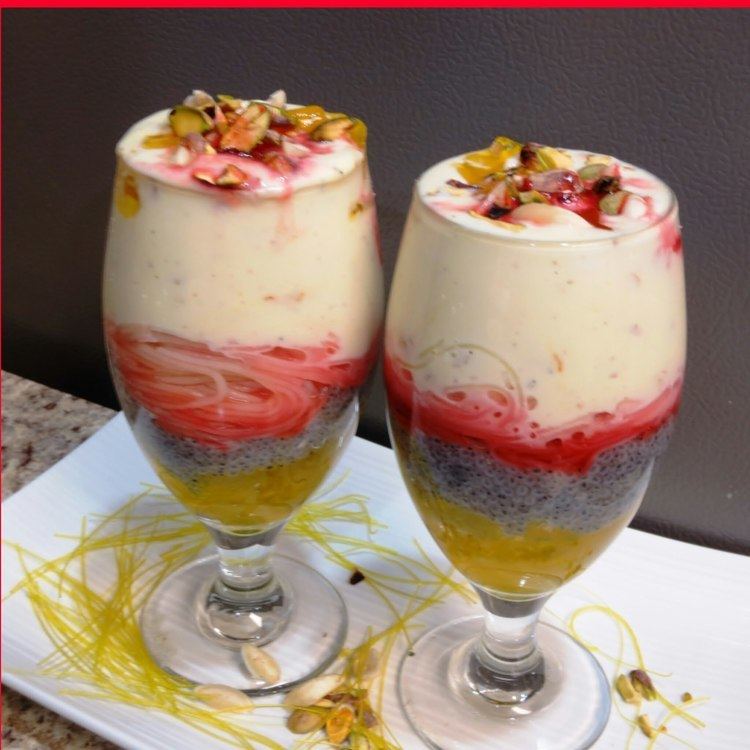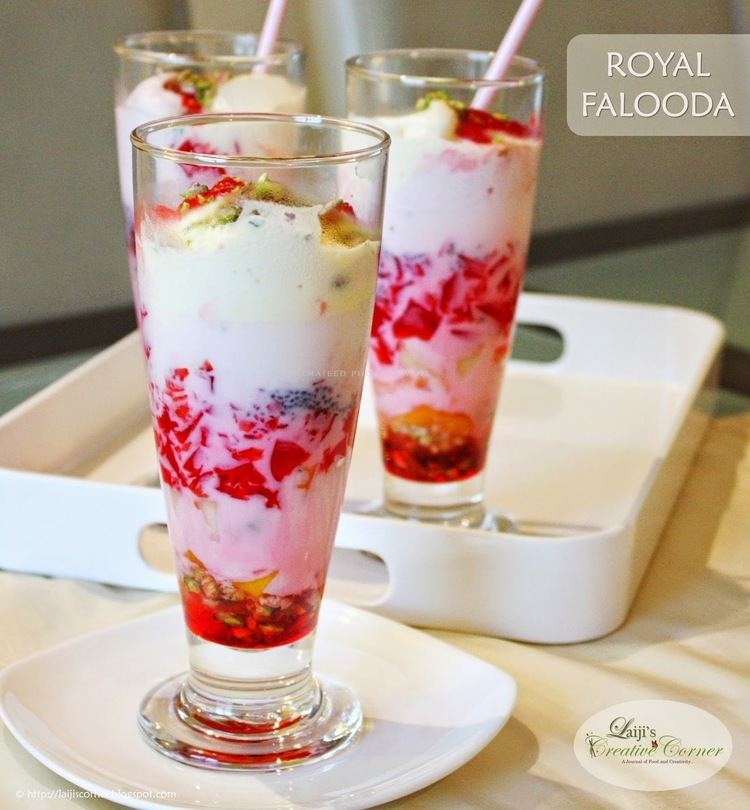Course Beverage Serving temperature Cold | ||
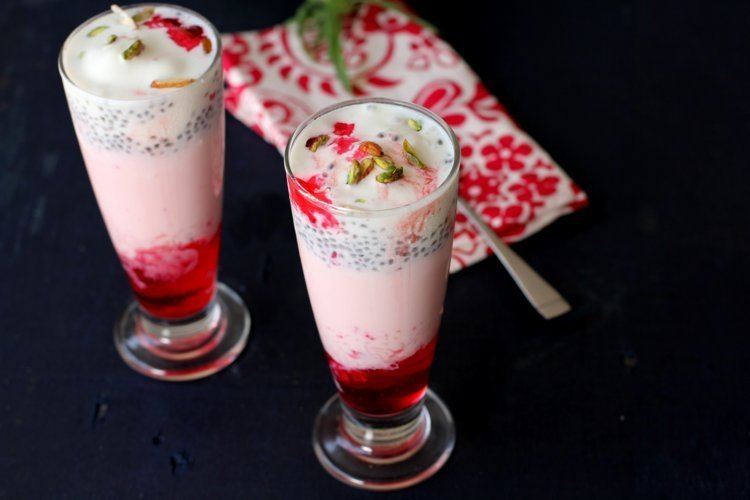 | ||
Main ingredients Milk, Rose syrup, Vermicelli, Psyllium Similar Kulfi, Rabri, Ras malai, Gulab jamun, Malai | ||
Falooda (Hindi: फ़लूदा) (Urdu: فالودہ) (Bengali: ফালুদা) (also Faluda), is a cold dessert popular in the Indian subcontinent. Traditionally it is made from mixing rose syrup, vermicelli, sweet basil (sabza/takmaria) seeds, and pieces of jelly with milk, often topped off with a scoop of ice cream. The vermicelli used for preparing falooda is made from wheat, arrowroot, cornstarch, or sago.
Contents
- Indian ice gola ice cream kulfi falooda lassi indian street food videos chocolate ice cream
- History
- Variants
- References
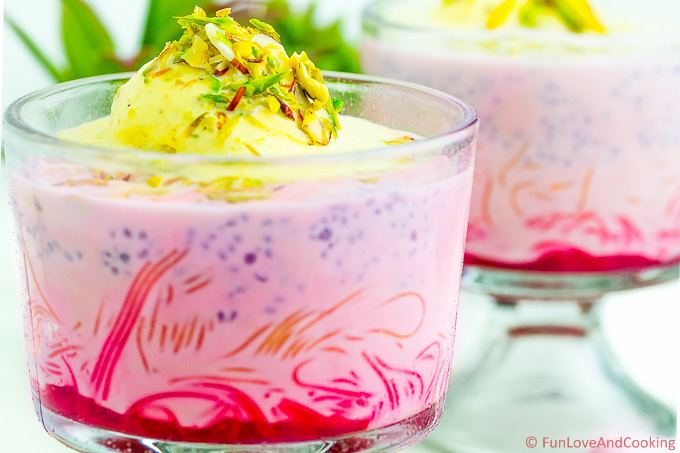
Indian ice gola ice cream kulfi falooda lassi indian street food videos chocolate ice cream
History
The origins of falooda go back to Persia, where a similar dessert faloodeh was popular. The dessert came to India with the many Muslim merchants and dynasties that settled in India.
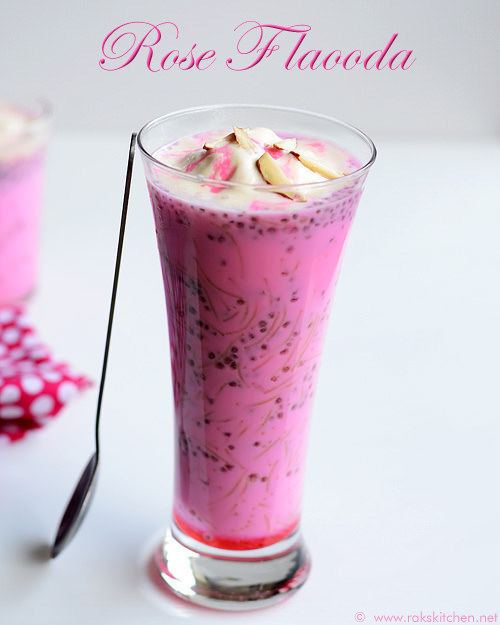
The present form of falooda was developed by the Mughal empire and spread with its many conquests. Muslim rulers who succeeded from the Mughals patronized the dessert with their own adaptations, specifically in Hyderabad Deccan and the Carnatic.
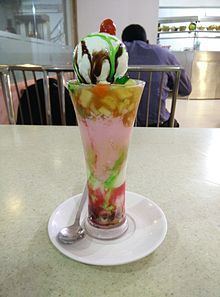
Today there are many versions of falooda. Some are made without noodles and blended with fruit. One of the Indian versions consists of kulfi, translucent wheat-starch noodles, and flavoured syrup.
Variants
